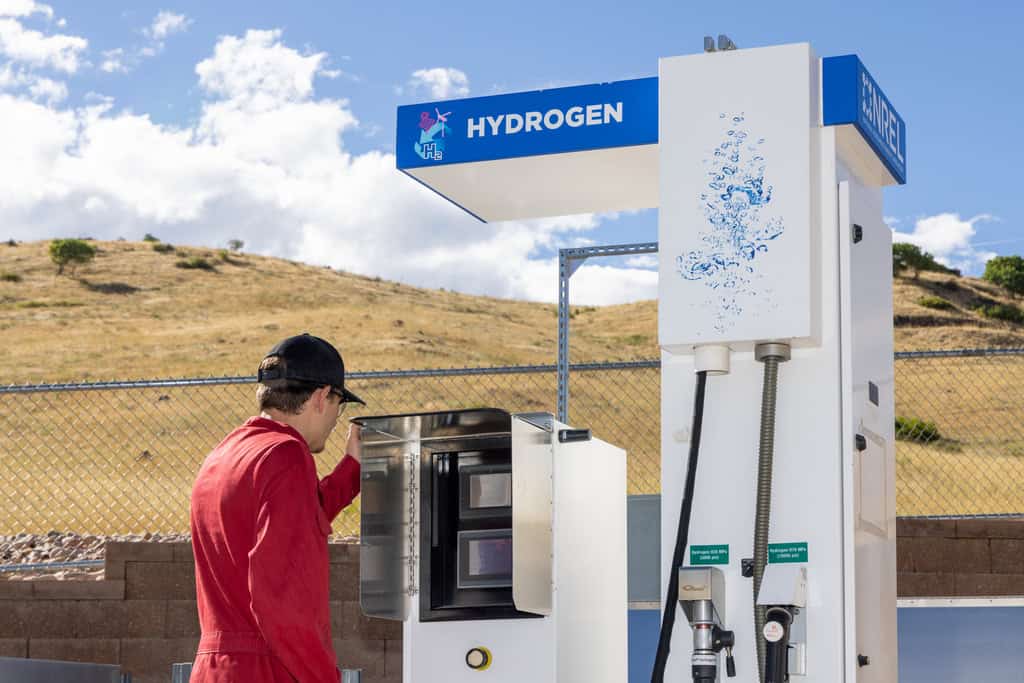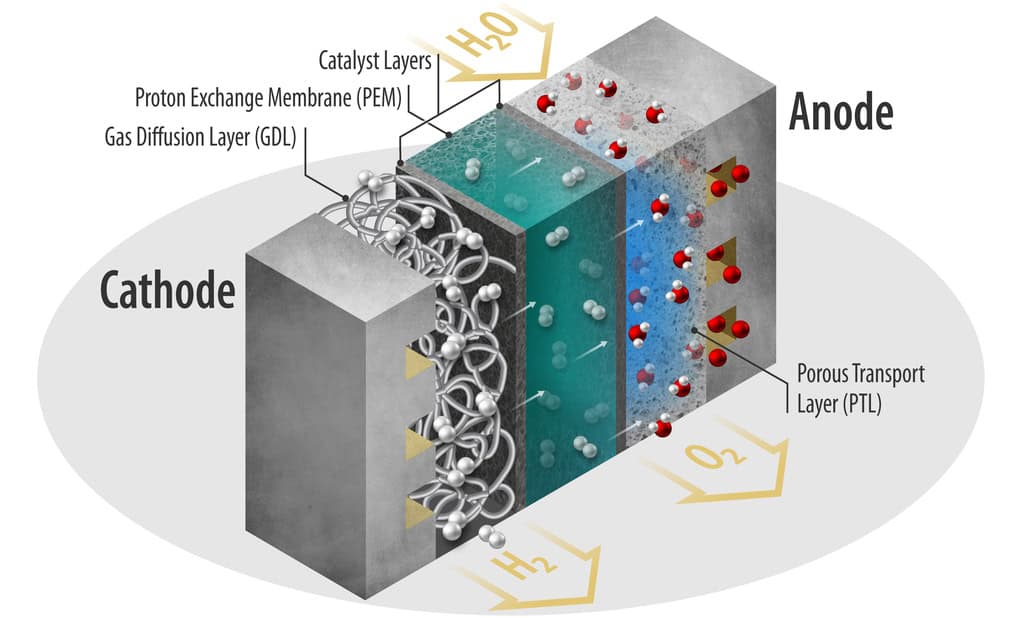Scaling up Power-to-X
Scaling up Power-to-X
How slot-die coating is transforming MEA manufacturing
The global energy transition demands breakthroughs in material performance and scalable manufacturing technologies. Among the most critical building blocks of the hydrogen economy are membrane electrode assemblies (MEAs), key components in electrolysis systems that convert renewable electricity into hydrogen and other valuable products.
As investments in Power-to-X (P2X) technologies accelerate worldwide, the pressure is mounting to scale up MEA production to industrial volumes with high reproducibility and cost-efficiency. While sufficient at the laboratory scale, traditional fabrication methods struggle to meet the throughput, flexibility, and integration needed for industrial mass production.
Slot-die coating has emerged as a powerful technique to address these challenges. Offering precise control over film thickness and high material utilization, slot-die coating can be applied to fabricate catalyst layers and, in some cases, even the membrane itself. This versatility opens the door to potentially manufacturing most — if not all — of the cell assembly layers through a single, scalable process.
Moreover, when integrated into roll-to-roll (R2R) systems, slot-die coating can enable a dramatic increase in fabrication throughput—studies have demonstrated production speeds over 500 times faster than traditional spray coating methods.
In this article, we explore the role of slot-die coating in the future of MEA manufacturing for P2X applications, from high-throughput catalyst layer deposition to the sequential construction of complete membrane-electrode assemblies.
The bottleneck: Traditional MEA fabrication methods
- Spray coating: Catalyst inks are atomized and sprayed onto membranes or decal substrates. This offers flexibility but is slow, labor-intensive, and not easily scalable.
- Decal transfer: Catalyst layers are first coated on a secondary substrate and then transferred to the membrane under heat and pressure. While effective, this adds extra handling steps and limits process speed.
Both methods present limitations when electrolyzer production must scale from thousands to millions of units. Production throughput remains low, costs stay high, and consistency across large volumes is difficult to achieve.
Roll-to-roll slot-die coating: Enabling high-throughput production
Slot-die coating, a method proven in battery and flexible electronics manufacturing, offers a scalable solution by depositing precise liquid films onto continuously moving substrates.
In roll-to-roll slot-die coating, the membrane substrate is unwound from a roll, catalyst inks are precisely dispensed through a slot-die head, a uniform wet film is formed as the web moves underneath, rapid drying is performed through inline ovens, and the coated material is finally rewound.
Technical advantages include:
- Controlled wet film thickness: Regulated by ink flow rate and web speed.
- Minimal material waste: Nearly all dispensed ink forms the active layer.
- High throughput: Continuous operation enables coating rates of meters per minute.
- Process stability: Consistent web tension and slot-die alignment ensure layer uniformity.
In a pivotal study, Park et al. demonstrated that R2R slot-die coating increased catalyst layer production throughput by over 500 times compared to lab-scale spray coating, without compromising MEA performance.

Building complete MEAs via slot-die coating
Stähler et al. pioneered a sheet-to-sheet process to fabricate completely slot-die coated MEAs (CC-MEAs) for PEM water electrolysis:
- Step 1: Slot-die coat the cathode catalyst layer onto a temporary substrate.
- Step 2: Slot-die cast the polymer electrolyte membrane directly on top.
- Step 3: Slot-die coat the anode catalyst layer onto the membrane.
- Step 4: Finalize by hot pressing to create a freestanding MEA.
This approach eliminates separate decal transfer steps, enhances control over interfacial properties, and enables the fabrication of thinner, optimized membranes.
Electrochemical testing showed that CC-MEAs delivered:
- Lower high-frequency resistance (HFR) compared to traditional assemblies.
- Higher current densities at given voltages.
- Robust mechanical stability despite the multi-layer construction.
While demonstrated in a sheet-based setup, extending this method to continuous roll-to-roll slot-die coating remains a promising direction for future industrial development, requiring advanced control of multilayer wet-on-dry processing and inline drying technologies.

Impact on industrial-scale Power-to-X manufacturing
Slot-die R2R technology introduces two fundamental advances for P2X industries:
1. Dramatic increase in manufacturing throughput
Slot-die R2R processes enable the production of hundreds of square meters of MEA materials per day, dramatically reducing per-unit costs and making gigawatt-scale production feasible.
2. New possibilities in MEA design
Sequential wet-on-dry coating opens opportunities for novel architectures — including graded catalyst layers, integrated ionomer distributions, and custom-tailored membrane thicknesses.
Additionally, Bodner et al.³ demonstrated that slot-die coated electrodes maintain durable performance over thousands of hours, fulfilling essential lifetime requirements for electrolyzer operation.
Challenges and outlook
- Ink formulation: Optimizing rheology and stability for high-speed, defect-free coating.
- Membrane-mechanical integrity: Managing swelling, drying stresses, and adhesion in multilayer structures.
- In-line monitoring: Real-time inspection technologies to guarantee consistent quality.
Nevertheless, the combination of precision, scalability, and versatility makes roll-to-roll slot-die coating a cornerstone technology for scaling up the green hydrogen economy and other Power-to-X sectors.
References
- Janghoon Park et al., “Roll-to-roll production of catalyst coated membranes for low-temperature electrolyzers,” Journal of Power Sources, 2020.
- Markus Stähler et al., “A completely slot die coated membrane electrode assembly,” International Journal of Hydrogen Energy, 2019.
- Merit Bodner et al., “Enabling industrial production of electrodes by use of slot-die coating for HT-PEM fuel cells,” International Journal of Hydrogen Energy, 2019.
Read more on the topic
Download the FOM Technologies Product brochure





